Related Content
Content

30 Awe Inspiring European Railway Stations: Part Two
Part two of the list of the most wonderful stations in Europe, that SMTJ has taken trains from
Share
Welcome to the second in a series of articles in which ShowMeTheJourney's shines a spotlight on Europe's most incredible railway stations - here's part one and **part three
9. Edinburgh Waverley:
how to take a train from and to here

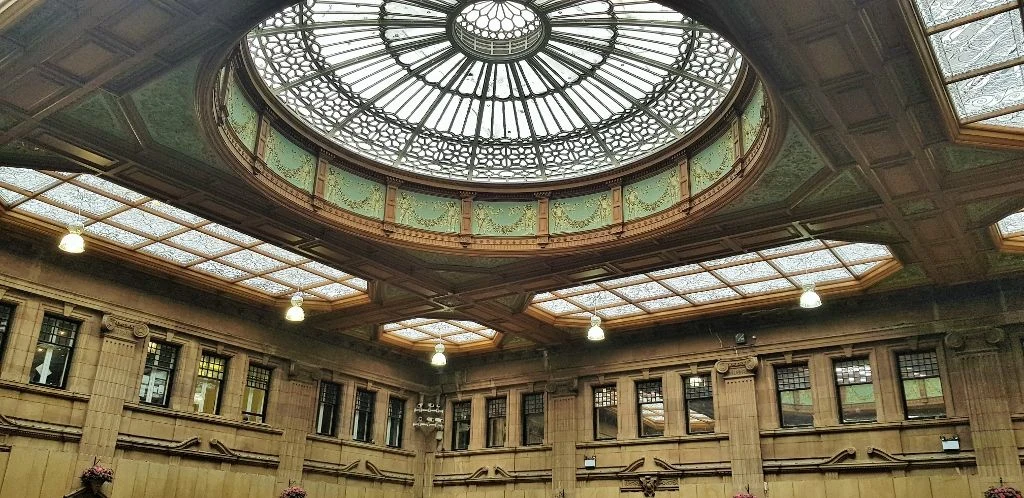
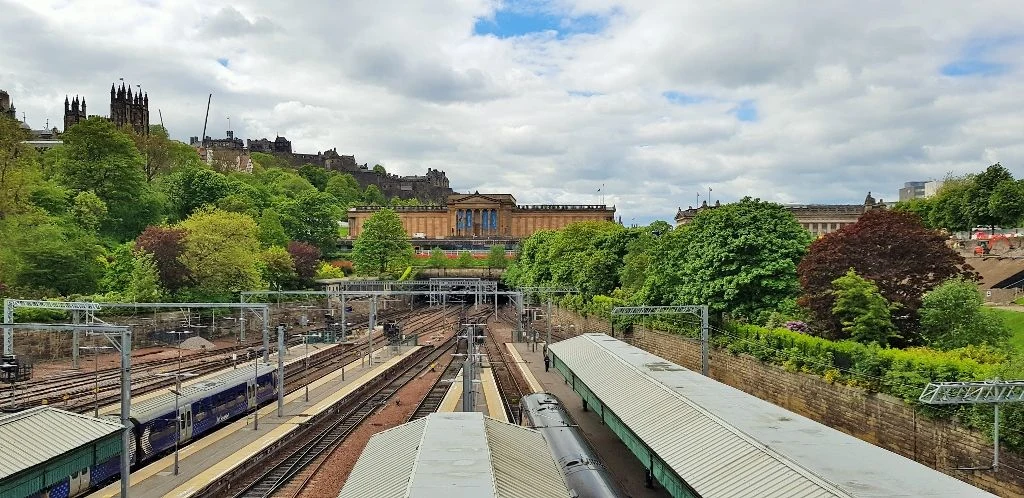
Aside from its stunningly beautiful waiting room, Edinburgh Waverley station is somewhat cluttered and hidden in a shallow valley in Princess Gardens between the city’s New and Old Towns.
So it’s not the station’s wonderfully preserved 19th century architecture, which earns it a place on this list.
What does is its dramatic location.
If you step off a train and ascend, not by the escalators up to Princess Street, but by the sloping old cab access road, you will find yourself on a bridge which spans the station - and it is from here that the image above was taken.
As can be seen, from this location the magnificence of the city of Edinburgh will be laid out before you.
A fantastic welcome to the city at the end of railway journey!
10. Frankfurt (Main) Hbf:
how to take a train from and to here
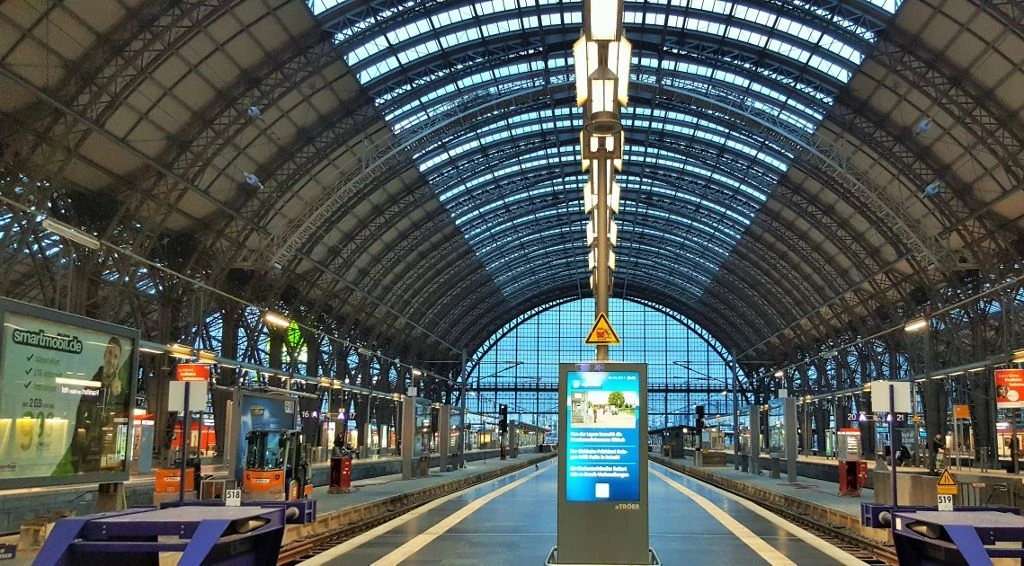
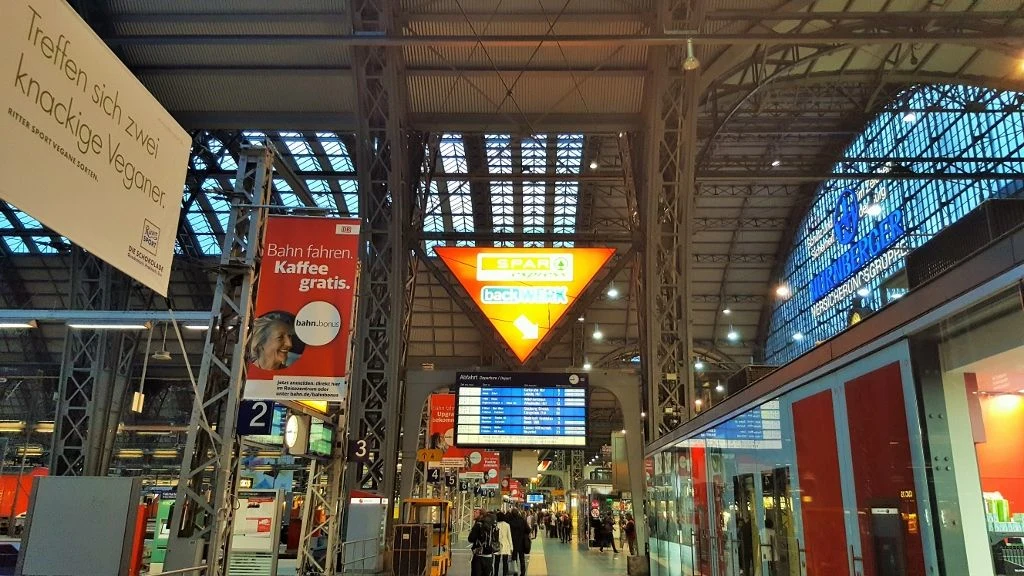

I'm not qualified to judge whether the main station in Frankfurt is an example of particularly noteworthy architecture or not, but what earns it a place on this list is its enormous size.
The 24 platforms/tracks/gleis used by the long distance and Regional trains are all lined up a straight line along the length of its enormous concourse
In common with the other main stations (hauptbahnhofs) in Germany, Frankfurt (Main) Hbf would be infinitely more inspiring if the profusion of posters which hang down from the roof of this concourse were taken away.
However, the saving grace is that they don’t clutter up the magnificent five arches in the roof and it's these that create such a splendid panorama.
The fact that Frankfurt (Main) hbf is also a terminal makes it an exceptionally easy station to use, despite its scale.
11. Paris Gare de l'Est:
how to take a train from and to here


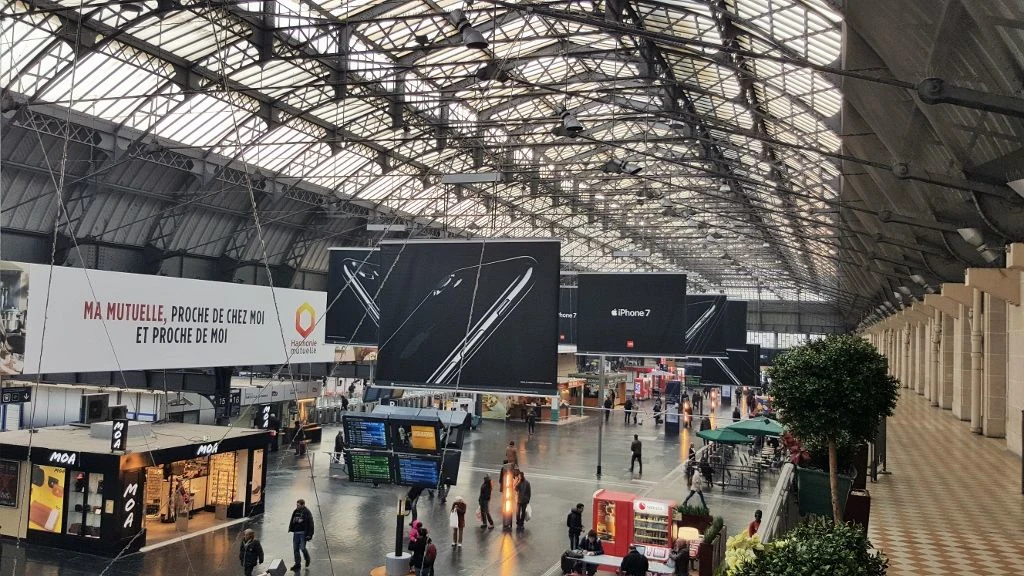
If this list was solely dedicated to Europe’s most beautiful large stations, the Gare De l’Est would be another automatic inclusion, but it’s the scale of its beauty which leads it to being included here.
The station had to be doubled in size in the early 1930s and the extension mirrored the stunning elegance of the existing station.
Not only is Paris Est lovely when approached from the street, it's beautifully preserved interior doesn't disappoint
Its fairy tale of a main entrance hall leads to its enormous concourse, which despite the advertisements hanging from the roof, retains a sense of scale and grandeur.
The Orient Express no longer departs from here, but it remains a romantic location in which to wait for a train no matter what the destination.
12. Hamburg Hbf:
How to take a train from and to here
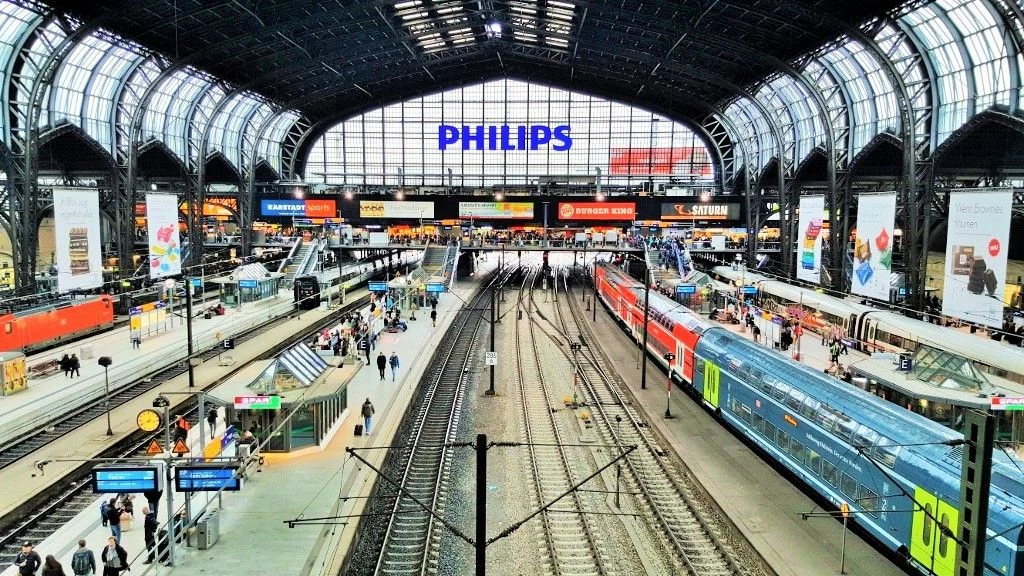
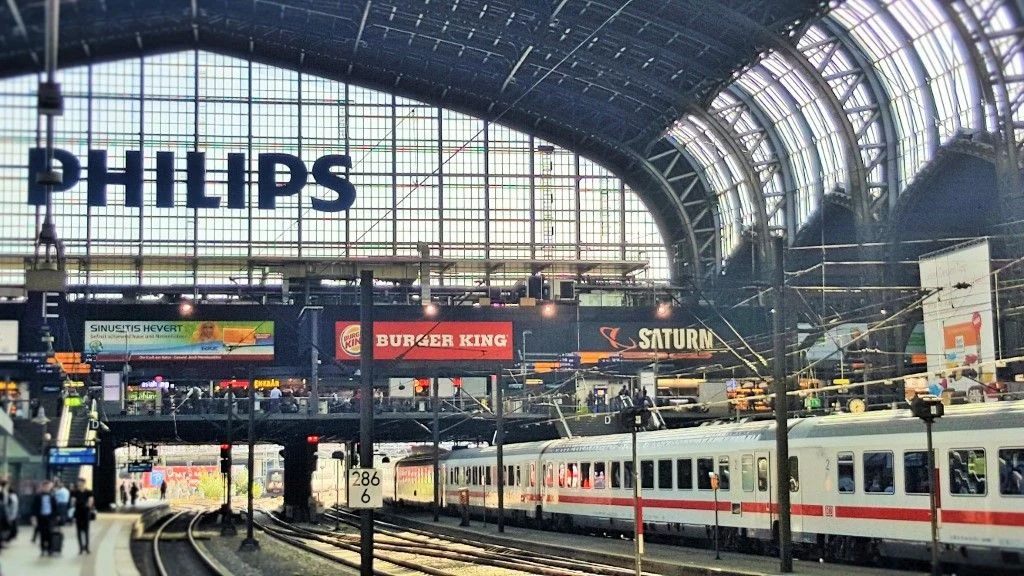
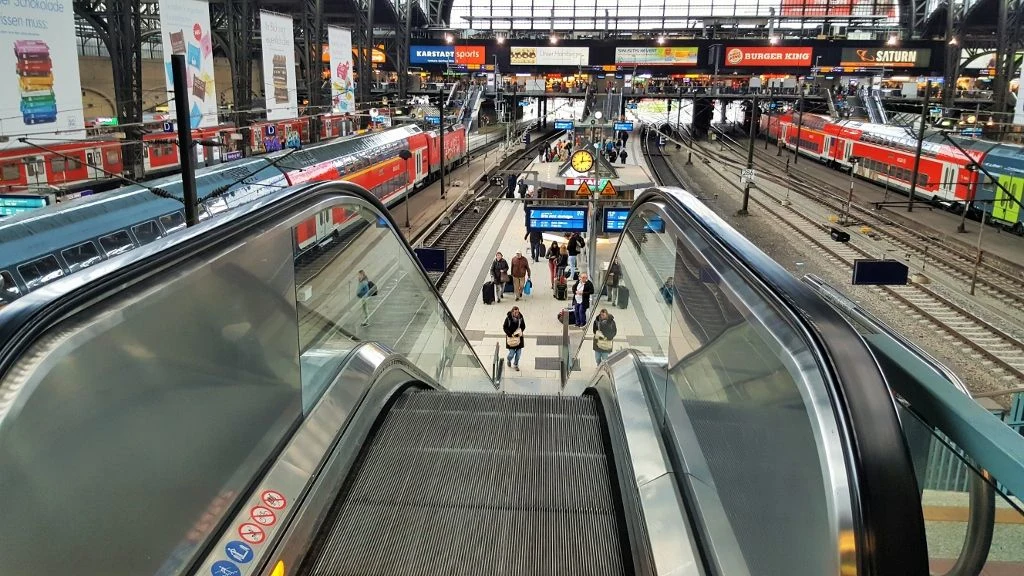
An observation deck would be a fairly pointless feature at virtually any other station in Europe, but Hamburg Hbf has one and it provides a wonderful vista from which to watch the world go by while waiting for a train.
Guess where the picture above was taken from!
The views across the station are made possible because the trains are below street level and have to be accessed from not one, but two enormous bridges which span the platforms/tracks/gleis.
Although two bridges mean two sets of entrances and exits, which can be a tad confusing for first time users.
13. London King's Cross:
how to take a train from and to here
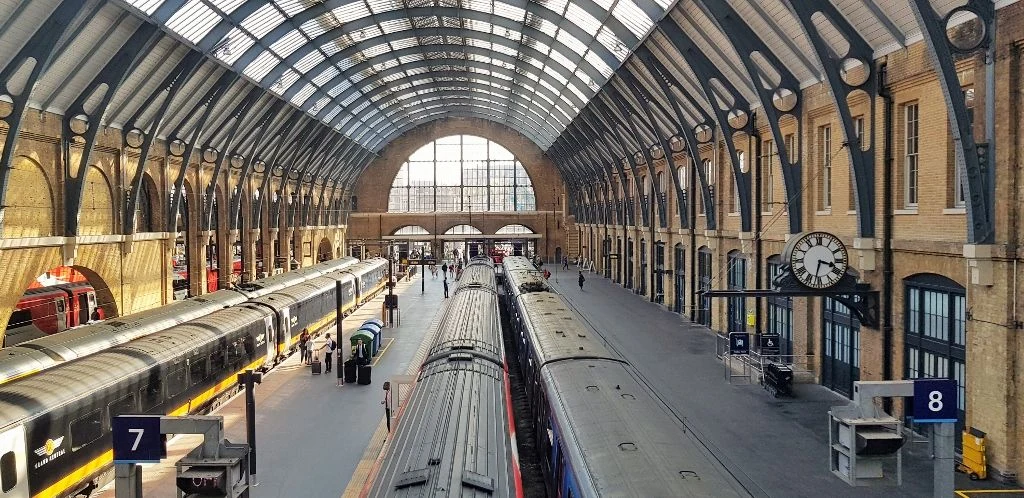
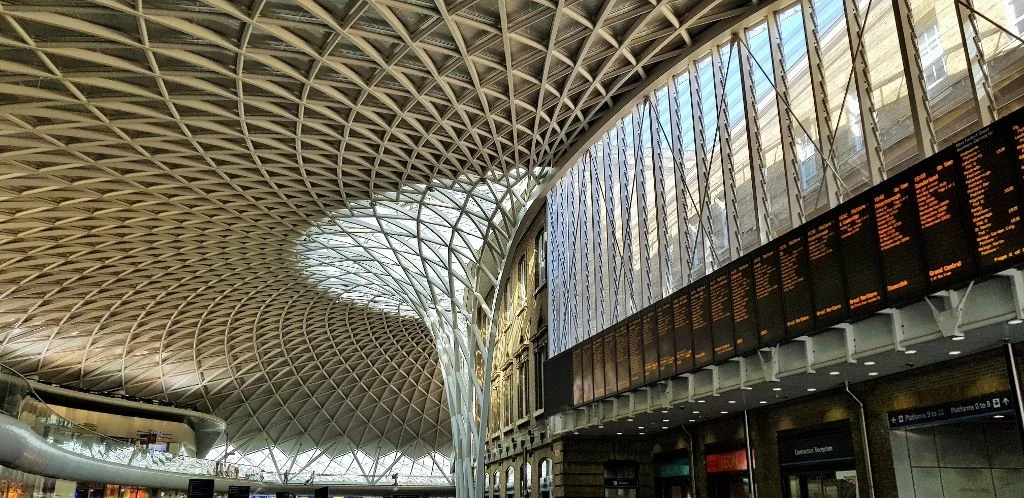
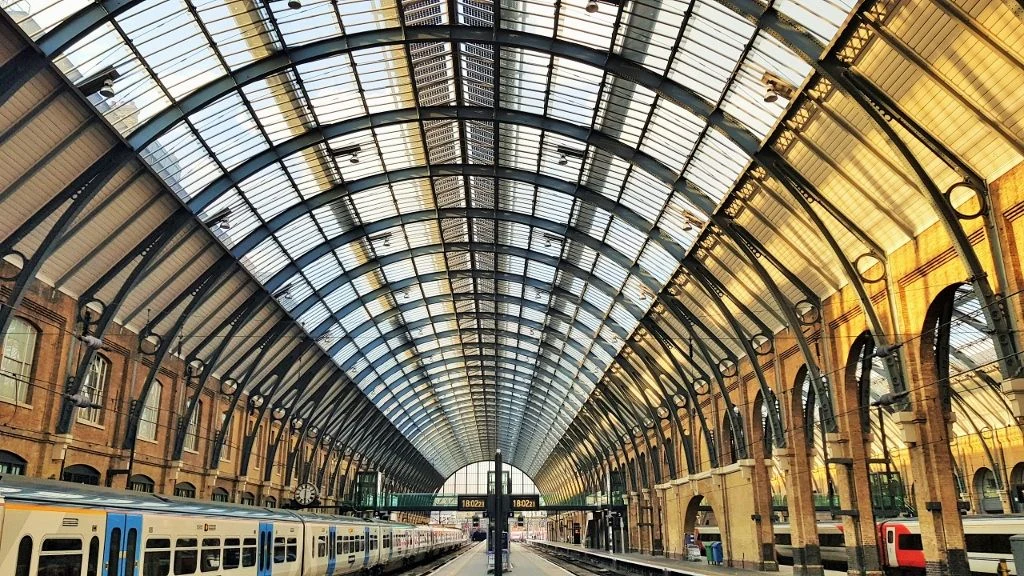
Admirers of station architecture can’t afford to miss out the eastern end of the Euston Road on a visit to London, as the magnificent Kings Cross is across the street from the splendid spectacle of St Pancras.
To be honest I'm not a huge fan of Kings Cross station’s new extension, I’d like a lot more if someone could turn off that blue light, but the renovation has also revealed the full majesty of the part of the station, which plays host to the long distance trains.
Prior to the 2014 rebuild, Lewis Cubbit's original elegant train shed had been spoiled by ugly extensions to the front of the station - though he couldn't have envisaged that King's Cross would be used by tens of thousands of people daily.
Because the new extension is to the side of the original terminal buildings, it enabled those clumsy additions at the front of the station to be removed.
As a result, if it wasn't for the contemporary trains, this thrilling vista pictured above, is pretty much how the station would have looked on the day it opened its doors in 1852.
14. Liege Guillimens:
how to take a train from and to here
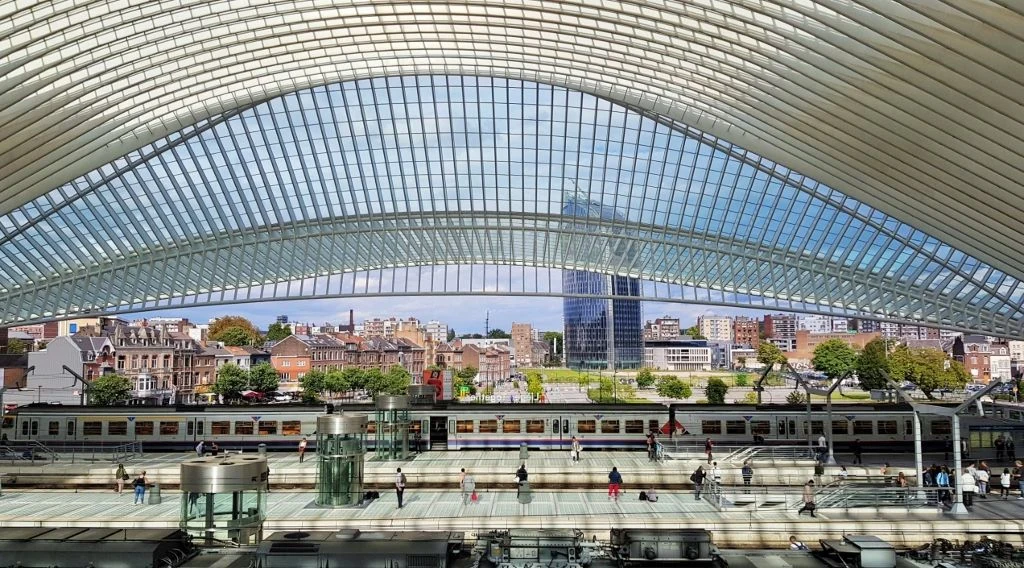
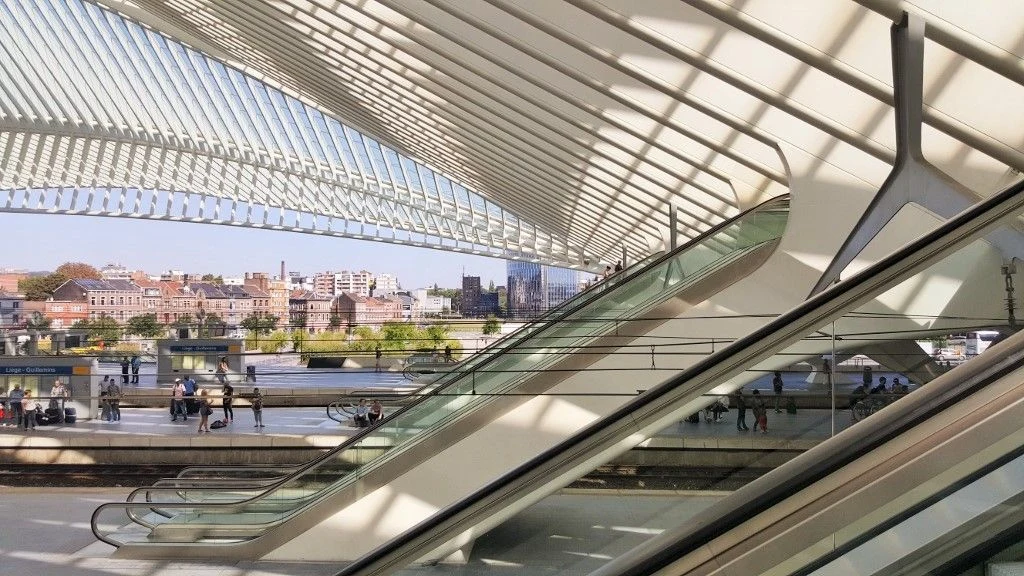
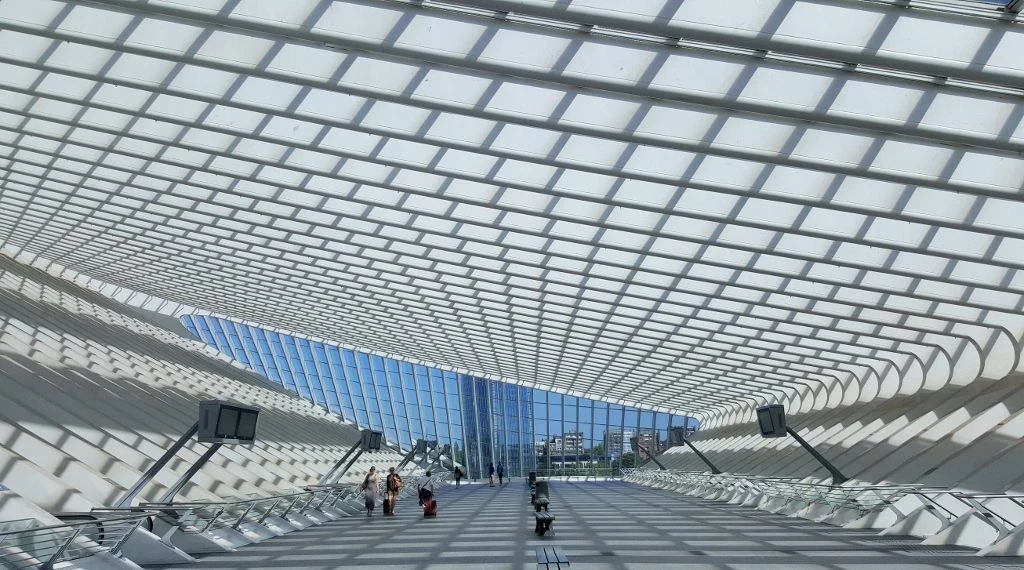
When it comes to a place at the top of Belgium’s most fabulous modern buildings list, Antwerpen-Centraal station's leading competitor is another station.
Liege wanted to attract attention to the fact that it had been plugged into Europe’s high speed train network, so subtlety was off the table and awesome spectacle was the goal.
It’s hard to argue against Santiago Calatravo's design for Leige-Guillemins being the ultimate example of wish-fulfilment for 21st century station architecture.
I have a confession, having now visited Liege twice, I can't tell anyone what the city centre looks like as I couldn't tear myself away from the station.
If architecture and design is of interest and you happen to be heading to Bruxelles from Germany on an ICE train, or any other frequent train service that calls at the station, you won't regret breaking your journey here.
15. Leipzig Hbf:
how to take a train from and to here
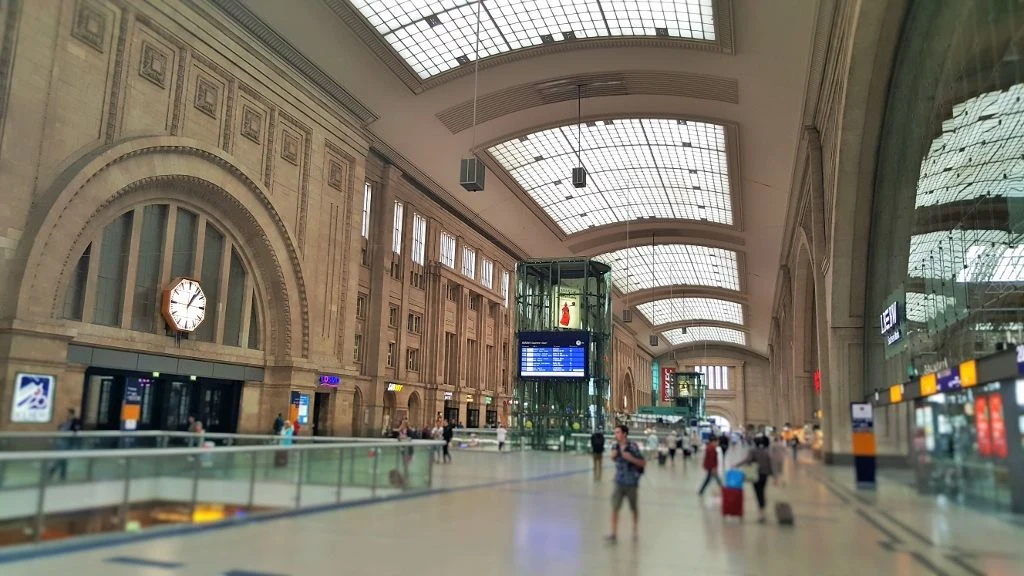
It’s not particularly obvious to me why Leipzig Hbf is Europe’s largest railway station in terms of floor area, the city has never been a major railway crossroads to match the likes of Milan or Munich.
The station remains out of proportion to the number of people and trains using it, which helps make it an exceptionally user friendly location from which to take a long distance train.
The fact that the gleis (tracks/platforms) used by the long distance trains are all on the same level as main concourse contributes to this easy to use quality.
That enormous station concourse can only be described as monumental and in order to preserve its sense of sense of grandeur, the shopping mall cleverly has been inserted into the level below.
Opened in 1915 Leipzig was inevitably severely damaged in World War II, but in 1965 it was reconstructed to the original design and if you visit today, you can appreciate why - and you can also see the vintage coaches and steam engines, charmingly housed on some of the spare tracks.
16. Liverpool Lime Street:
how to take a train from and to here
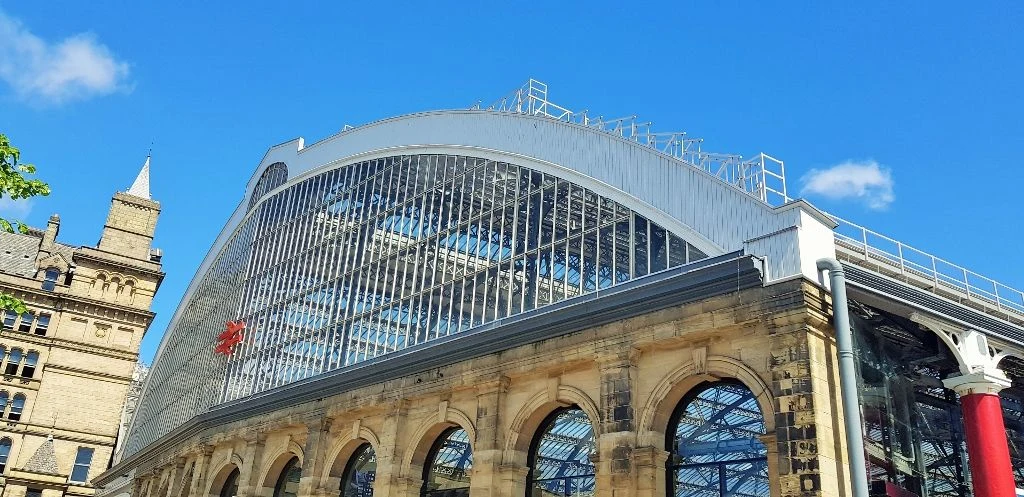
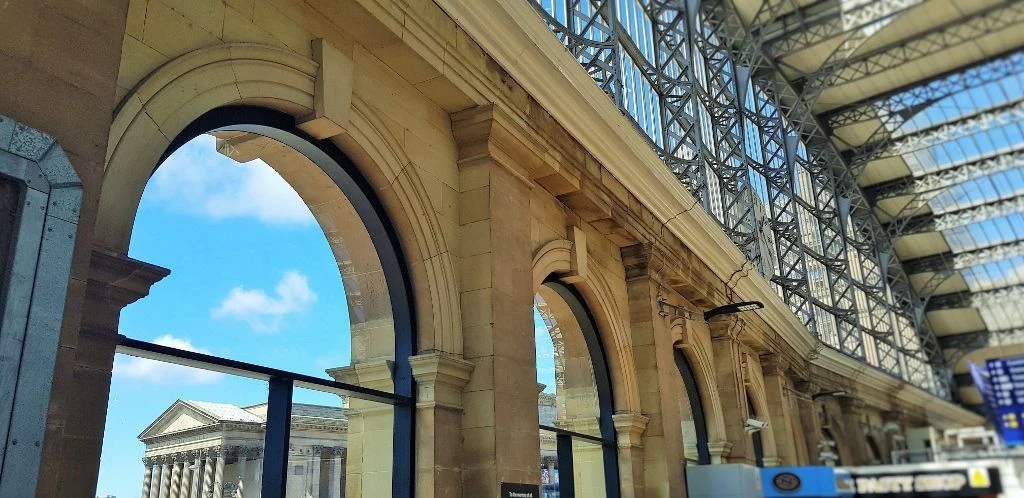
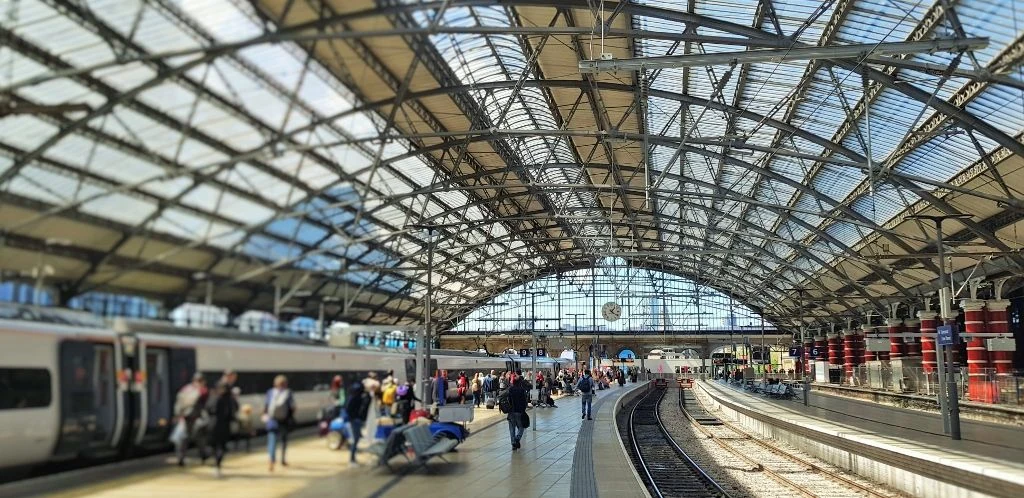
Three things that give a station a wow-factor:
(1) a beautiful sight when stepping off a train,
(2) a gorgeous building when viewed from the street
(3) and a vista from the exit, which showcases the best of the destination that has been arrived at.
Liverpool Lime Street ticks all of those boxes!
It has existed in its current form since 1879, but it has recently been restored so that it has never looked more magnificent.
The concourse of the arch which spans over platforms 6 - 10 provides a spectacular vista over the city, which is dominated by the sublime neo-classical elegance of the nearby St Georges Hall.
17. Lyon-Saint Exupery:
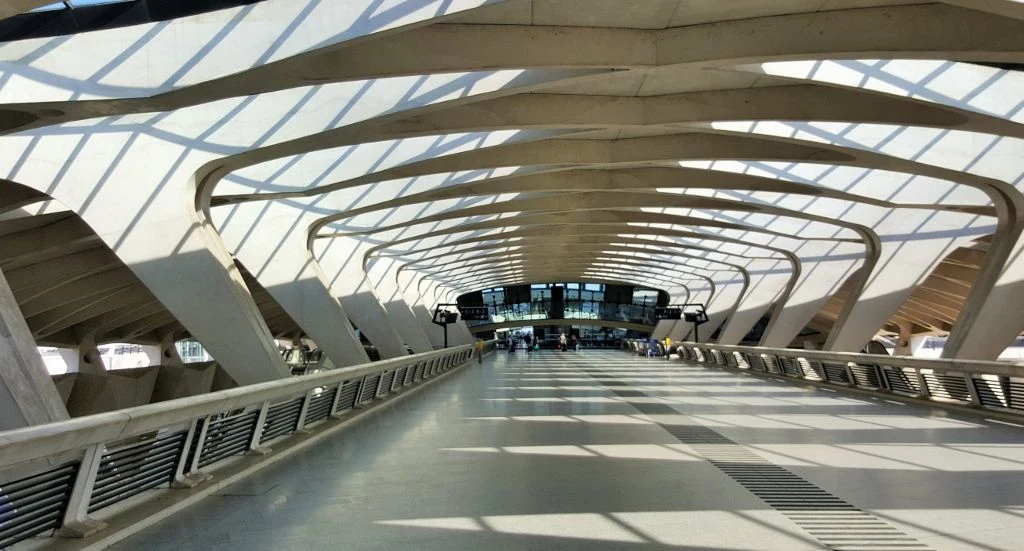
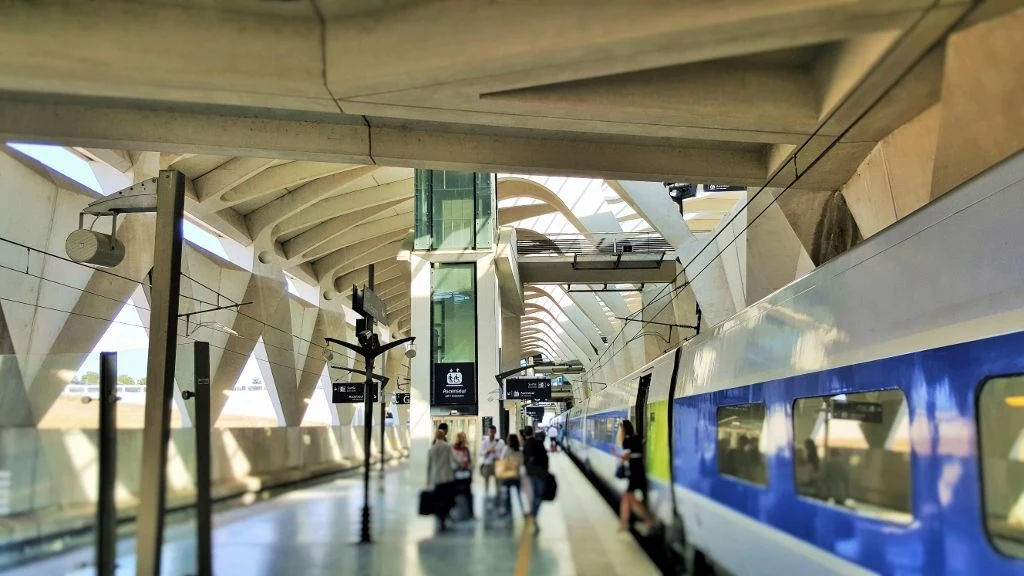
For the time being creating a station guide for Lyon Saint-Exupery remains on the to do list, for the simple reason that comparatively few travellers use it.
The convergence of high speed trains and an airport required a vision that proclaimed 'travel is fabulous', but the majority of the TGV trains whizz through the station at 280 km/h.
We can't help wonder whether Santiago Calatravo's (see Liege above) iconic statement for train meets plane was necessary to remind people that such a travel combination is possible, because for most of the time it resembles the world's most fabulously over-engineered tram stop - because a tram provides the main public transport link to Lyon city centre.
18. Madrid Atocha:
how to take a train from and to here
[
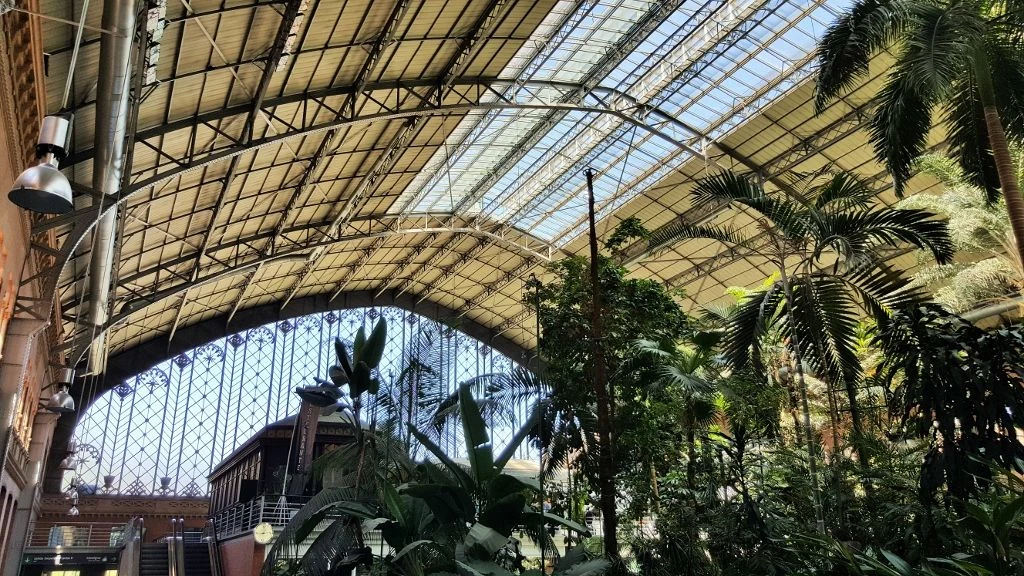
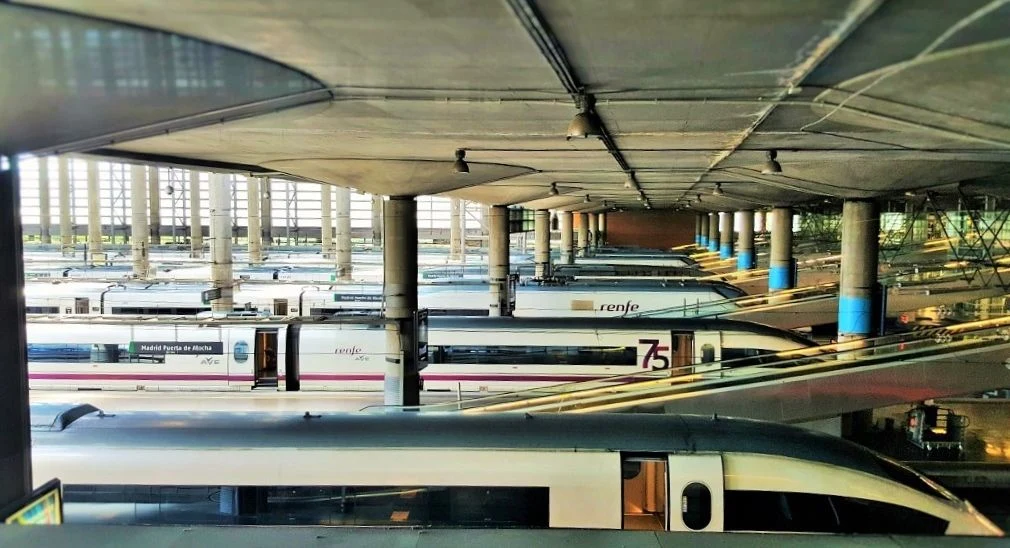
The opening of the high speed railway lines, which whizz travellers to and from destinations to the south and east of Madrid, presented a quandary for Atocha station.
It's beautiful main terminal had been opened in 1892 and no less a figure than Gustave Eiffel had contributed to its design, so ripping it down would have been a travesty, but it was much too small to accommodate the huge increase in the number of trains and travellers which would now be using the station.
Enter award winning Spanish architect Rafael Moneo and his vision for a huge extension to Atocha in order to create a high speed terminal, a building that not only magnifies the sense of wonder, it also mirrors the sleek design of the trains which use it.
Famously the 19th century concourse was retained and used for an indoor garden, which more than 20 years after its opening now resembles a jungle, which largely obscures the wonders of its interior.
Much of Atocha looks fabulous, but it also a sprawling station and with its architecture emphasising the fact that it is four stations in one, it doesn't make it any easier to use.
Also some of the parts of the station that connect its terminals and entrances are the opposite of impressive.
But the spectacle which greets those who arrive by high speed train most definitely has the wow factor.
Part One and Part Three:

Simon Harper
I wanted to share my passion for train travel and explain how anyone can take the fantastic journeys I have taken.

This is one of more than 100 train travel guides available on ShowMeTheJourney, which will make it easier to take the train journeys you want or need to make. As always, all images were captured on trips taken by ShowMeTheJourney.
This second version of ShowMeTheJourney is exciting and new, so we are genuinely thrilled that you are here and reading this, but we also need your help.
We’re striving not to let anything get in the way of providing the most useful service possible, hence a facility has been set up with DonorBox which can be used to support the running costs and make improvements.
Instead of advertising or paywalls, your financial support will make a positive difference to delivering an enhanced service, as there’s a lot of ideas which we want to make happen.
So if you have found the info provided here to be useful, please consider saying thank you.


